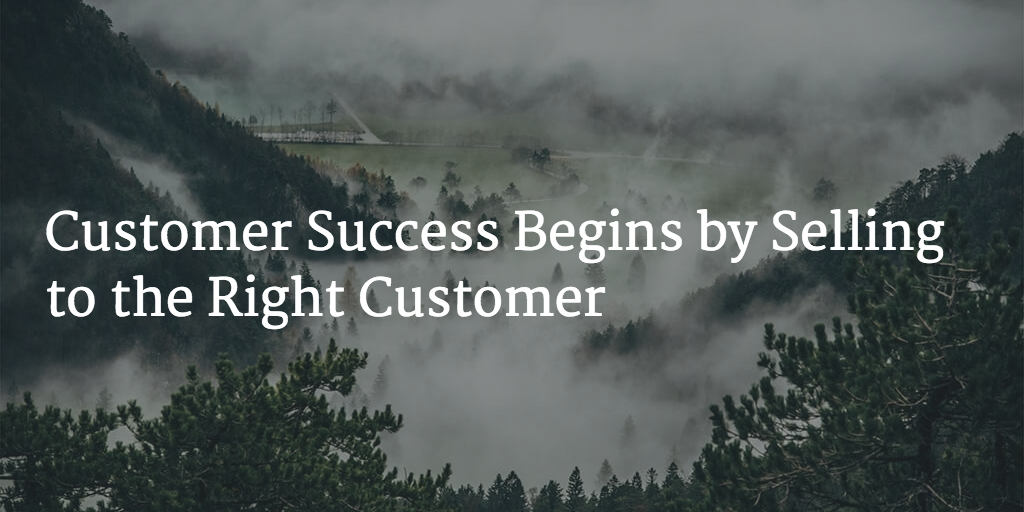Customer Success is not just an organization, but is really a philosophy and requires the whole company to be behind it. If that isn’t true, then the odds of being successful at this are pretty small because like most organizations, Customer Success does not live on an island.
Retention truly depends on every part of the enterprise being aligned and working closely together. If you turn that thought around, you will also conclude that Customer Success should have an impact on every other organization.
Which means, from a customer-facing standpoint, Customer Success starts with selling to the right customer.
Now, this sounds like a no-brainer thing to do, but my point is that you have to think about customer success from the very beginning of your pipeline all the way to the end of the lifecycle of that customer. That has to start with to whom you market, and to whom you sell, because if you’re not selling to the right customers you will not be successful at retaining them.
When I say “sell to the right customer” it’s not as easy as just saying let’s pick customers who are the perfect fit for us and only close deals with them. That is the general idea, but beyond that you need to think about how thoroughly understanding your customers can help influence both your Marketing and your Sales.
There will come a day not too far in the future, when your customer success solution will help you identify the risk that’s in your sales pipeline. Think about a standard Sales pipeline and then visualize a field or indicator on every prospect in that pipeline, indicating the risk of retaining that customer. You can already use your Customer Success solution to help identify your Ideal Customers.
Wouldn’t that help you make better decisions about how to manage that sales process or even decide to not sell to that customer?
Let’s stop for a second and think about all that we know about customers. If you have lots of customers, over some period of time there’s a lot of things you know.
Let’s consider a few:
- Length of Sales cycle
- Final price
- Discount
- Industry
- Company size
- Salesperson
- Geography
There’s a whole lot of stuff that we know about customers and if we can take all that intelligence and apply it back into the sales pipeline, you really truly can start to identify the risk of each of the opportunities in your sales pipeline. Inarguably, this would help you sell to the right customer.
At the extreme, this could result in Customer Success vetoing Sales deals, right? The answer, of course, is yes. If it’s a customer who’s a terrible fit and you know that there’s almost no chance of them being successful, you should absolutely not sell to them.
But life seldom hands us decisions that are that black and white. More likely is that you would carefully assess the risk of each of those customers or prospects in your pipeline and then deal with each of them individually and accordingly.
If the risk is higher maybe the answer isn’t to NOT sell to that customer, but the answer is sell a higher service package to them because they’re going to need more attention and more effort from your services team. It’s very hard to stop a Sales deal because they are so hard to come by.
But no one would argue that, if you can clearly assess the risk, you can ask Sales to sell them the $20K Services package instead of the $5K Services package. Everyone wins then – the customer gets the attention and assistance they need, more revenue flows in, and, most importantly, the chances of long-term success for that customer go way up.
If you adopt selling to the right customer as a core philosophy, you will accomplish something critical – you’ll get your Sales team thinking about retention, too. Ultimately, this is a must.
Everybody’s a stakeholder. Everybody knows that a SaaS company – or any company for that matter – can’t be successful unless you are retaining your customers. It’s crucial that this becomes the thinking from the Sales organization as well.

